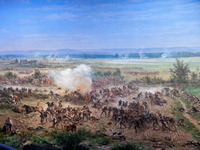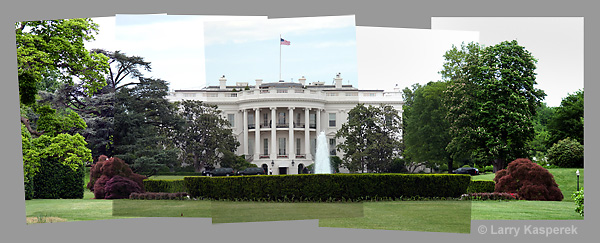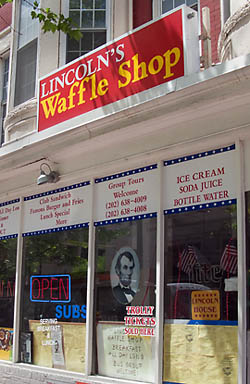 My view over the weekend.I dipped my toes into the world of art festivals this weekend. It was not a spontaneous decision, as most summer festivals require you to submit your work for a juried process months in advance. We (our company) already had a tent, and we purchased an expensive mesh panel system to hang our photographs on (a good purchase as it made setup and take-down a breeze).
My view over the weekend.I dipped my toes into the world of art festivals this weekend. It was not a spontaneous decision, as most summer festivals require you to submit your work for a juried process months in advance. We (our company) already had a tent, and we purchased an expensive mesh panel system to hang our photographs on (a good purchase as it made setup and take-down a breeze).
There were three festivals I applied for, all relatively local, and all kind of upscale. I made it into two out of three. My reasoning was simple, another revenue source in this lame economy. My biz partner is doing one this weekend (you can’t enter as a company, only as an individual).
I had been to many art festivals and thought I knew what to expect, but found out that there is a whole sub-culture to it. Everyone knew everyone else, they traveled the circuit, discussed the good festivals and the bad. And, they complained about how bad sales have been over the past few years. You know, the economy and all.
I was chatting with another photographer on Sunday (day two) and told him everyone I had talked to reported disappointing sales, except one exhibitor who said it was a great weekend for her. “She’s lying,” he said.
As for me, I sold one unframed print over both days. BUT, I also won a Blue Ribbon for first place in photography, some cash, and an automatic “in” for next year. So I’ve got that going for me.
I have one more festival coming up in about three weeks. I compiled a list throughout the weekend. I will make adjustments. But I have to wonder … is it my photography, is it priced right, is it the economy, is it my (non) sales pitch, does my presentation suck, bad Karma? I’ll report back in a month.





